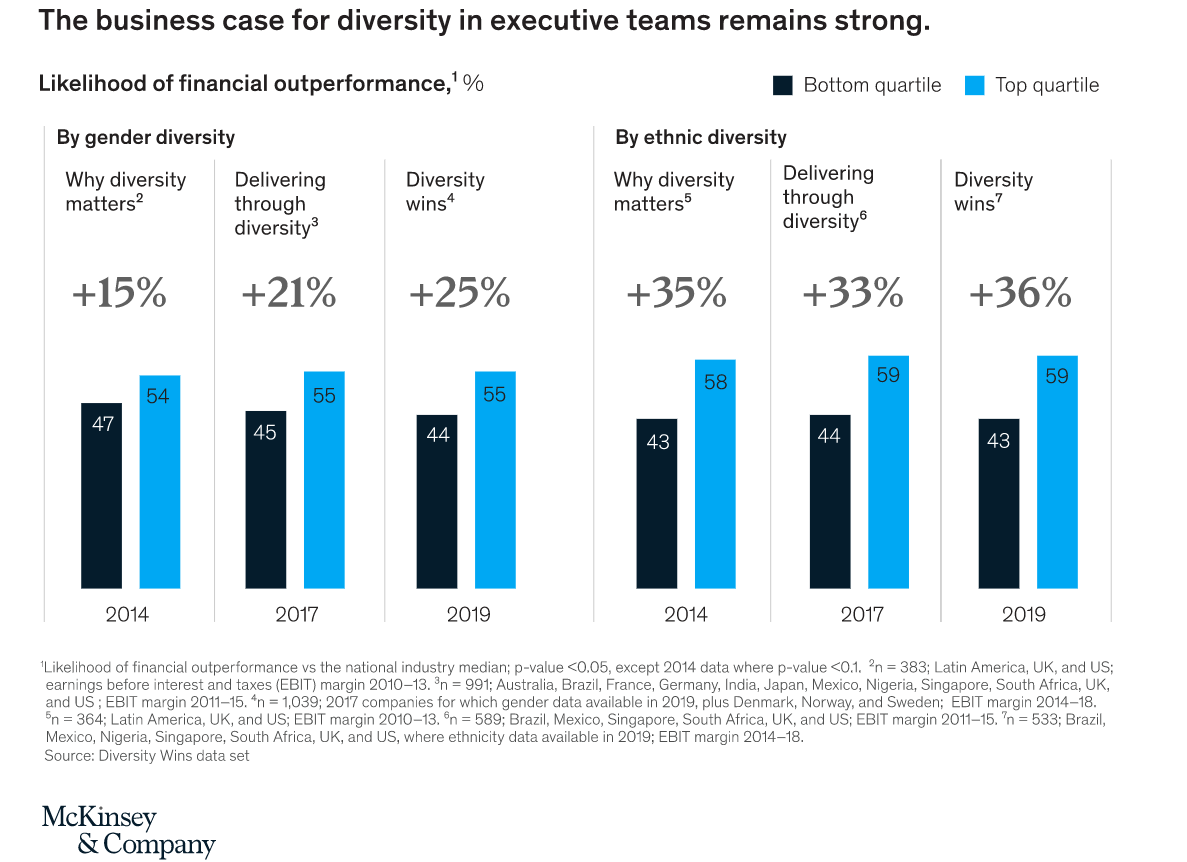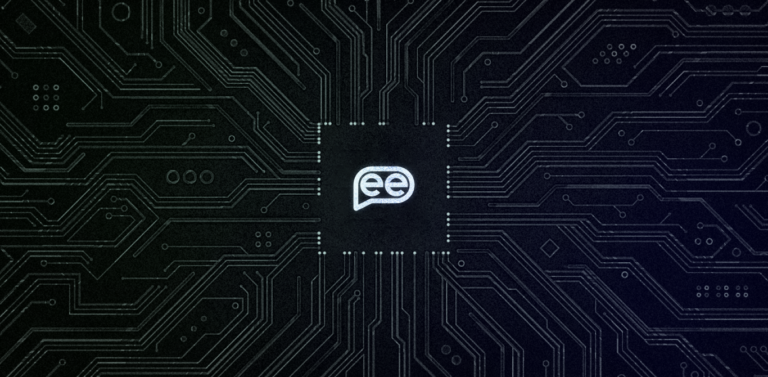As we transition into newer working styles and environments, it has become increasingly important for organizations to create and maintain a successful workspace where all people stand an equal chance to thrive both personally and professionally. That is where the concept of Diversity, Equity, and Inclusion (DE&I) comes into play.
‘Diversity, Equity, and Inclusion’ requires understanding how personal and professional development work in silos and together. So in this article, we’re going to help you understand what DE&I means and how to create a DE&I strategy for your organization.
What is DE&I (Diversity, Equity and Inclusion)?
DE&I is an ethos that identifies the value of having diverse voices and centers around inclusivity and employee wellbeing. To bring these values to the forefront, companies implement programs and initiatives that help them move their workplace towards a more diverse, equitable, and inclusive space.

Now let’s take a quick look at what each pillar of DE&I stands for by itself:
- Diversity refers to the presence of differences within an organization. This typically includes differences in race, ethnicity, gender, gender identity, sexual orientation, socioeconomic class, and age.
- Equity refers to the act of ensuring that there are processes and programs in place that provide impartial and equal possible outcomes for everyone at the organization, across different aspects.
- Inclusion refers to the practice of ensuring that the people at the organization feel a strong sense of belonging in the workplace because they feel supported, and can be their authentic selves.
Why does DE&I matter?

Organizations tend to mostly focus on diversity, leaving out equity and inclusion for the culture to form by itself. But here’s why establishing each pillar in a concrete manner is important:
- A diverse workplace allows for more ideas and innovation. Having diverse talent means a broader range of skills among the employees of the organization, that come with diverse experiences and perspectives. This helps enhance the creative levels at work and the potential to increase productivity. However, it is important to keep in mind that diversity not only refers to the physical and visible differences but also the thought process.
- Equity requires the organization to recognize barriers and advantages that may impact an individual’s personal and professional growth. Ensuring everyone stands at an equal pedestal, irrespective of their starting points, encourages cognitive diversity in decision-making. It also has a big impact on job satisfaction and employee engagement, which works positively towards an organization’s long-term growth.
- Inclusion maintains the diversity you bring in by letting the individuals be their authentic selves at work without compromising on the required professionalism and etiquette. This ensures that individuals can focus all their energy on making an impact at work, instead of having to change themselves when they step in.

For employers and people management professionals or the HRs alike, it is important to understand that there is no ‘quick-fix’ to DE&I at any organization. While a lot of organizations are quick to begin hiring keeping diversity in mind, they often underestimate the importance of inclusion and equity, which has a direct impact on the diversity they’re trying to bring in.
This is where the importance of creating a concrete DE&I strategy comes into play.
How to develop a Diversity, Equity and Inclusion initiative strategy?

The process of developing a DE&I strategy can be different for every organization. But there are a few steps and actionable that every organization must take to establish DE&I.
Step 1: Compile data about existing diversity and equity
The very first step is to look inwards by collating data on your workforce. By gathering data on your employee demographics, an organization will be able to understand the diversity of its employees and the equity of its internal practices. It will also help you identify areas of concern or trends that you need to cover in your DE&I strategy.
Employee demographic data typically includes some or all of the following:
- Age
- Gender
- Ethnicity/national origin
- Language
- Disability
- Family status
- Gender identity or expression
- Generation
- Life experiences
- Organization function and level
- Personality type
- Physical characteristics
- Race
- Religion, belief, and spirituality
- Sexual orientation
- Thinking/learning styles
- Veteran status (if applicable)
Some organizations collect the above information during onboarding. But certain additional data points like religion and sexual orientation may require you to conduct employee surveys.
It is important to note that it may be challenging to gather diversity data from employees initially. This is usually because employees become uncomfortable not knowing how the organization intends on using the data. A good practice is to be transparent while conducting your surveys, letting them become a part of the bigger picture you’re envisioning.
Step 2: Identify your areas of concern
Once you have the data on employee demographics and diversity in place, it’s time to get a birds-eye view first to see if something stands out as a big concern. This usually includes taking a look at the demographics such as age, sex, and race representation to begin with.
Gradually, move to the next layer of your data by drilling it down based on aspects that impact equity such as location, department, position, and so on.
The goal is to not miss out on any data point and identify loopholes as you start to analyze the data. This becomes much easier if you’re using an employee survey software that brings all the data points onto one dashboard. AI-powered employee surveys give insights automatically after the survey so that managers can act in real-time to address pressing problems faster.
Some of the questions for identification of DE&I challenges may include:
- Do we have more men than women in <department name>?
- Have promotions been limited to <demographic>?
- Are we making more hires in <demographic – location> and why?
- Does our leadership team consist of <demographic> only?
- Do we have decision-makers in the age group of <demographic>?
Step 3: Address policies and organization practices affecting DE&I
Once you have identified where your organization lacks when it comes to diversity, equity, and inclusion, the next step is to look into what is causing it. For example, you can start by looking into these processes:
- Talent acquisition: Do you tend to have a preference for hiring from a defined demographic for specific roles? If yes, note down the reason and counter-question why you feel so and what happens when you start to bring in more diversity to the role.
- Performance reviews: Take an in-depth look at how you have been conducting performance reviews, your parameters of success, development discussion, and how you give employee appraisals. Identify similarities in the last three to six months and the reasons why you tend to stick to the same.
- Employee referral programs: A lot of organizations prefer hiring through referrals to foolproof their talent acquisition by following the ‘like me’ approach. But this may result in candidates choosing to refer people from the same race, religion, or class to the organization. In such cases, you may want to put an embargo or limit on the number of referrals that can be made.
- Company culture: Look into what you’re promoting as a culture within the organization. This may include how you respond to aspects like marital status, religious beliefs, or even political opinions. It’s a good idea to create a neutral ground with your vision and mission that gives everyone an equal opportunity to add to your culture in a positive way.
- Unconscious biases: The human brain is wired to choose what feels comfortable or right to them. Due to this, the hiring managers or leaders may subconsciously make repeated choices. Take a look into ‘why’ this is happening, or conduct an employee survey for separate teams to identify if they feel there is a bias in how the work is being done.
Step 4: Identify and document your business objectives
The next step is for you to identify how a diverse, equitable, and inclusive workplace helps you as an organization. It’s important to set specific goals related to DE&I based on the company’s strategic objectives.
For example, if your goal is to create more innovative solutions for your target market, you need to up the innovation at your organization. This may require you to look into diversifying your market research teams, and then working your way upwards to bring in development teams that can build for different markets with prior knowledge. The approach will help you in inclusive decision-making on diverse ideas.
Step 5: Establish support and stakeholders
Just like any other initiative, if you want DE&I to be successfully implemented at your organization, you need to ensure senior-level buy-in. Having all the stakeholders on the same page as you establish processes and policies is important.
To be able to do this effectively, you should establish direct links of DE&I efforts to the organization’s overall strategic goals, and estimate their impact. It is also advisable to reach out to specific stakeholders to help you improvise the same.
Another task at this step is to identify who will be accountable for implementing the DE&I strategy and initiatives. This is important because implementing DE&I may include training for team members, direct reporting, conducting frequent surveys, and other such tasks. Or you could establish a DE&I committee that is collectively responsible for all the initiatives.
Step 6: Create an action plan to implement the DE&I strategy
Once you have everyone aligned on the what, why, and how of the DE&I initiatives you plan to take for the organization, the next step is to create a plan of action and define the ‘when’.
Diversity, equity, and inclusion may take time to establish, and each requires setting up various policies and practices in place, along with employee training and thorough documentation during the process to measure impact.
This is why it is important to break up your DE&I initiatives into steps and set a timeline on the same.
Step 7: Communicate your initiatives consistently
Once you start executing your DE&I strategy, it is important to consistently communicate it within your organization as well. This may include identifying leaders or stakeholders in different departments and crafting a message for each to communicate to their teams in an educational and engaging manner.
It’s also a good idea to showcase your DE&I initiatives in your company vision and mission documentation, ongoing organizational communication, and on social media. This will help employees feel more involved in the process and proud to share the same in their networks.
Step 8: Measure the impact of your DE&I efforts
Don’t wait for your DE&I strategy to be implemented end-to-end to start measuring its impact. You should measure the outcome of each initiative implemented as you complete each phase of the strategy.
This may include outcomes like an increase in the representation of demographic groups identified as low before, improved employee survey scores, increased employee retention rates, and public recognition.
It is also important to note here that some initiatives may seem intangible. For example, culture cannot be measured but if you conduct employee surveys and see more positive results, you know your DE&I efforts have had an impact on what values you want to establish in the organization.
Step 9: Review, adjust and optimize
DE&I initiatives should not be static. You should continually review your efforts and the response it generates, and learn from them.
A good way to measure the success of the initiatives implemented includes conducting surveys on similar topics as before to see if the response has altered. It may also require you to collect more data from your employees as you start to identify new loopholes or opportunities to improve your strategy.
Optimize on the go, backed with data, but always document the process.
Step 10: Automate where you can
Data collection in an ongoing manner and documenting it can become tedious as you move through different stages of implementing a DE&I strategy.
To make the process more efficient, look for comprehensive employee experience software that helps you automate processes like DE&I surveys, document management, knowledge management, FAQ resolution, and case management. The goal here is to free up the HR team from the operational time and expenses that it’d take to implement a DE&I strategy. This will help you focus more on interpersonal relationships and make the initiatives successful.
Does your organization need to look into DE&I?

Considering how important it has become for organizations to ensure a good employee experience, DE&I is non-negotiable today. The best indicator for whether or not it is time for you to focus your efforts on Diversity, Equity, and Inclusion is to conduct an employee survey and look for red flags in the responses.
The goal is to identify whether the employees feel left out, unempowered, or disengaged at the workplace, and find measures to address them.
Remember, DE&I is your long-term strategy for organizational growth.
Ready to take the first step? Conduct the Diversity and Inclusion employee survey.







3 Comments